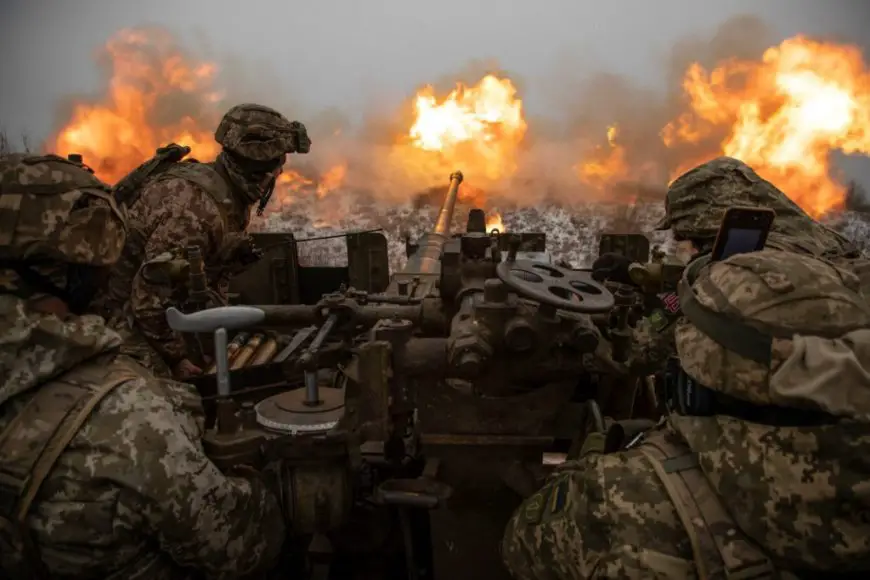Ukraine War 2025: New Battle Lines, Diplomatic Shifts, and NATO’s Rising Stakes
A deep dive into how the 2025 Ukraine war is reshaping NATO strategy, US–Europe dynamics, and emerging defence pacts across the globe.

Current Battlefield Snapshot
Fifteen months into 2025, the Ukraine war remains a brutal, dynamic conflict. Russian forces have intensified their offensive in the eastern Donetsk region, while opening a northern front in the Sumy area. Kyiv, however, has launched bold counterattacks using drone swarms against Russian airbases—seriously damaging bomber fleets atlanticcouncil.org+1apnews.com+1.
Civilians continue to pay the highest price: over 40,000 lives lost, millions displaced internally, and nearly 7 million fleeing abroad . Though frontline positions remain mostly stalemated, the escalation in drone and missile use suggests both sides are gearing for a large-scale summer campaign.
Diplomatic Momentum and Emerging Alliances
Istanbul Peace Talks & Putin’s Terms
Recent Istanbul talks yielded no breakthrough. Russia’s draft memorandum demands Ukraine’s withdrawal from four occupied provinces, a ban on NATO membership, and limits on Ukraine’s own militaryatlanticcouncil.org. Kyiv and Western governments have firmly rejected these terms as non-starters.
Shifting U.S. Policy
U.S. policy wavers under President Trump, who criticizes Ukraine’s ambitions and anticipates ending the war via diplomacy. Trump supports robust European-led guarantees over NATO expansionunderstandingwar.org+15cfr.org+15reuters.com+15thetimes.co.uk+4defense.gov+4max-security.com+4. This stance adds unpredictability to Washington’s role in future security arrangements.
Europe’s Growing Autonomy
In response, European nations have stepped up. The recent London Summit produced a “coalition of the willing” to safeguard Ukraine post-conflict, with the UK alone pledging £1.6 billion for air defence missilesen.wikipedia.orgen.wikipedia.org. Germany, France, Poland, Italy, and the EU are backing initiatives like the European Sky Shield and the broader Readiness 2030 defence plan worth €800 billion en.wikipedia.org+1en.wikipedia.org+1. Meanwhile, the Nordic–Baltic Eight (NB8) are reinforcing regional defences through joint expeditionary forces en.wikipedia.org+12theguardian.com+12atlanticcouncil.org+12.
NATO: Modernization and Collective Defense
NATO, responding to lessons learned from Ukraine, is rapidly pivoting to high-intensity conflict readiness. Under Admiral Vandier’s guidance, 22 members now meet the 2 % GDP defence threshold, with calls to raise that to 5 % businessinsider.com. Alliance-wide investments include drone swarms, AI-enabled warfare, satellite surveillance contracts, and munitions production surge capacity businessinsider.com.
Forward presence in eastern Europe is being reshaped: Germany alone plans to permanently station a 2,000-strong brigade in Lithuania by 2026 en.wikipedia.org. Air dominance exercises by U.S. and NATO forces continue too, reinforcing eastern deterrence .
The Realignment of Global Alliances
-
U.S.–Europe Pressure Balance: With U.S. policy unpredictable, Europe is moving toward defence independence—though still reliant on U.S. tech and nuclear deterrence .
-
Russia’s Testing Ground: Experts warn that Ukraine represents more than a regional conflict—it’s a strategic test of NATO’s Article 5 credibility nato.int+15thesun.co.uk+15understandingwar.org+15.
-
Ukraine Repositioning: Kyiv is aligning broadly with Western military norms, from training to procurement, while exploring long-term neutral status under European security frameworks—without full NATO membership.
What Comes Next
-
Summer Offensive & Territorial Stakes: A major Russian push in Donetsk/Sumy may trigger shifts in back-channel diplomacy.
-
Europe’s Defence Consolidation: Expect further military spending, with initiatives around Sky Shield and Readiness 2030 gaining ground.
-
Delayed NATO Integration: Ukraine’s official NATO path remains stalled, though renewed security guarantees—involving boots, missiles, and air patrols—seem likelyatlanticcouncil.orgen.wikipedia.org+1en.wikipedia.org+1.
Conclusion
The Ukraine war in 2025 continues to shape global alliance structures. Militarily, it’s a technology-enabled trench war; diplomatically, it’s a trilateral tug-of-war between Kyiv, Moscow, and Kyiv’s varied international backers. NATO is evolving swiftly—but Europe, under pressure to act independently, may redefine what collective security looks like in the post-Ukraine era.














